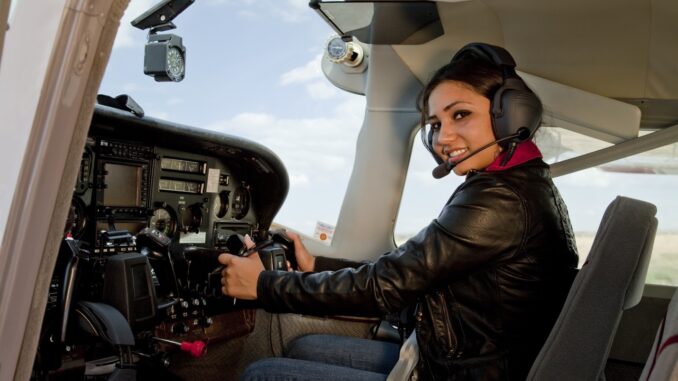
The aviation sector is beginning to recover from the COVID-19 pandemic that started in 2020. However, historical problems like the lack of pilots are slowing the momentum it has been building over the last year. Bhanu Choudhrie, founder of Alpha Aviation Group (AAG), advises that this confluence of events presents a unique opportunity to increase the diversity of pilots.
Industry experts predict that the aviation industry will need 645,000 pilots by 2038. In addition, Boeing’s CEO recently reported that airlines need to focus on increasing their pilot population through collective recruiting efforts, adding that a talent pipeline is vital to the survival of commercial aviation. The possibility of a severe pilot shortage greatly threatens this industry’s future, but it also provides the aviation sector a chance to rethink the way it engages cockpit talent.
Female Shortage
Bhanu Choudhrie feels strongly that airlines should address the impending shortage by hiring more female pilots. In addition to meeting their current staffing needs, this practice would also help them meet diversity and inclusion requirements. This achievement is increasingly important to building a successful, progressive company in today’s competitive business environment.
Women currently comprise an average of 5.1 percent of all commercial pilots throughout the world, although the variance by region is considerable. For example, the Americas, Australia, Europe and New Zealand are generally in line with this average. However, the Asian Pacific market has only 1.6 percent female pilots, while the Middle East has 2.1 percent. On the other hand, India’s pilot population is 12.4 percent women, and Africa’s female pilots account for 9.8 percent of its total.
Analysis
The primary reason that India and Africa have more female pilots is that both of these aviation markets are growing quickly. Their great need to keep up with the demand for air travel requires these markets to build effective engagement and support systems for female pilots in their infrastructure. The implementation of a goal-based system may also be effective in putting more women on the flight deck.
Airlines in other parts of the world are also following suit. For example, EasyJet, Europe’s low-cost carrier, expects 20 percent of its new pilots to be women. Qantas, Australia’s flag carrier, has an even more ambitious goal, with its plan to increase female pilots to 40 percent within six years. Even the Middle East will be increasing its female pilot population. For example, Wizz Air Abu Dhabi has recently announced its plan to recruit more women through a program dedicated to this purpose.
A recent study by Oliver Wyman identified a lack of female role models as the key factor currently limiting the recruitment of female pilots. While the active promotion of women by airlines is certainly a key factor, this study shows that it’s even more important for existing female pilots to mentor younger recruits. This practice allows older pilots to illustrate the benefits of a career in the cockpit through their own experiences.
AAG’s Response
Bhanu Choudhrie founded AAG in 2006 to train commercial pilots throughout the world. The rapidly growing company provides a variety of aviation training solutions, especially the assessment and selection of cadets. AAG also offers services like type ratings and cadet programs, which it customizes to meet the unique needs of each airline.
It’s important for pilot training firms like AAG to encourage more women to work in aviation as airlines do their part. AAG has always focused on attracting female talent while training over 2,500 pilots. For example, AAG often brings the stories and experiences of female trainees directly to universities, in the hopes that students will develop an interest in aviation at an early age. These events also help provide students with a clear path into this profession.
Summary
The aviation industry’s recovery from the COVID-19 pandemic is limited by the shortage of incoming pilots. Airlines need to meet future demand by recruiting more women and other groups that are underrepresented in the cockpit. This situation provides an ideal opportunity to increase the visibility of these groups by trusting them in leadership roles. Airlines also need to develop a culture that welcomes diversity while also attracting the best talent. These changes are vital to the long-term survival of commercial aviation.
